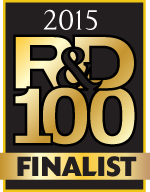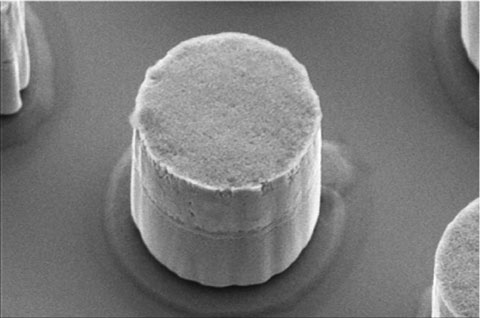
Dow Electronic Materials recently announced that three of its products have been selected as finalists for the 2015 R&D 100 Awards, which celebrate the most significant technology inventions of the past year. The winners will be announced Nov. 13, 2015, during a ceremony at Caesar’s Palace in Las Vegas. In this three-part interview series, we go behind the scenes with Dow experts who played pivotal roles in the development and commercialization of these innovative chemistries.
In part two of this series, Wataru Tachikawa, Global Marketing Manager, talks about the changing requirements in advanced wafer-level packaging (WLP) applications and how they are met by SOLDERON™ BP TS 6000 Tin-Silver—which has already been recognized this year as the Bronze 2015 Edison Award winner in the Material Science: Manufacturing category.
What is it about SOLDERON BP TS 6000 Tin-Silver that makes it so innovative?
SOLDERON™ BP TS 6000 Tin-Silver was developed in response to the challenge of electroplating a highly uniform and highly controllable alloy containing no lead.
Solder is a critical element in electronics and must provide connections that are durable and reliable. For decades, tin-lead has been the standard, and much of the electronics infrastructure was designed around it. However, due to environmental concerns that led to lead-free legislation, materials suppliers have spent the past 10 years searching for a lead-free chemistry to match the reliability of tin-lead solders. Tin-silver (SnAg) has emerged as the most viable solution.
Technology is what differentiates Dow’s SOLDERON BP tin-silver: patented additives that provide manufacturers with superior performance and low cost. These proprietary additive packages ensure the quality of SnAg alloy structures following electrodeposition and subsequent reflow, ensuring that critical requirements of solder bumping are met. These include Ag% control and uniformity, uniform height distribution across die and wafers, smooth surface morphology of deposits and void-free performance after reflow.
How is SOLDERON BP TS 6000 Tin-Silver enabling the evolution of solder bumping into capped copper pillars?
Advanced semiconductor designs have finer feature sizes and bump geometries to meet high-density requirements. Additionally, die sizes are decreasing, which increases the challenge of how many I/Os can be put on the die. In response to both of these drivers, the industry is switching from C4 bumps to Cu pillars. C4 bumps have a size limitation because of cross talk due to bridging and shorts that occur during bump collapse. Cu pillars stand up to mass reflow and thermocompression bonding processes, and therefore allow for finer pitch sizes without worrying about bridging and shorts, and can achieve finer geometries overall. However, while Cu-Cu direct bonding is ideal, processes are still in development. So it is still necessary to rely on a tin-silver cap to bond two dies.

Tin-Silver-Capped Copper Micro Pillars
How does SOLDERON enhance manufacturing and meet next-generation requirements?
Advanced packaging applications such as flip chip, WLP and 3D-ICs typically require lead-free solder joints as a key element of the interconnect structure. As new packaging technologies are qualified and the process window continues to widen, plating chemistries must be versatile enough for multiple applications, and accommodate a range of feature sizes (20µm-70µm) to remain cost competitive. Lastly, the industry’s progress toward 3D TSV requires plating chemistries that can create high-performance lead-free solder bumps.
This single formulation achieves plating speeds ranging from 2 to 9+ µm/min (4 to 18 ASD), which are substantially faster than the baseline chemistry in the market. These higher plating speeds enable much higher throughput while still maintaining high production yield. The tunable nature of the Ag composition in this formulation makes it suitable for a number of applications and eliminates the need to change the chemistry to address different processing requirements. The chemistry is robust enough for bumping and capping a wide range of patterned wafers and it is not restricted for use with specific photoresists.
No other commercially-available SnAg can achieve this range of plating speed and flexibility to meet performance requirements from a single formulation. All of these innovations in SOLDERON BP TS 6000 Tin-Silver enable the industry's widest process window with the most robust process flexibility and ultimately lower cost of ownership for the customer.
To learn more about how SOLDERON BP TS 6000 Tin-Silver can influence reliability of Cu pillar applications and enable 2.5D/3D IC packaging, click here.